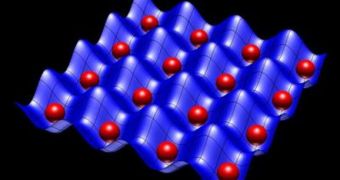Experts have been working hard on overcoming the obstacles that stand in the way of creating a fully functional quantum computer for quite some time now, but one of the main issues in their path was the fact that they could not control the actions of a single qubit (quantum bit – the basic unit of a quantum processor) inside a matrix of others. Now, this obstacle is behind them, thanks to a successful investigation completed by scientists at the US National Institute of Standards and Technology (NIST).
In their approach, the American experts used polarized light, but in an innovative manner, unlike any others thus far devised. This essentially allowed them to create “effective” magnetic fields around each of the qubits, in an accomplishment that could be the cornerstone in quantum computer manufacturing. What made this task difficult was the fact that the qubits needed to be kept under strict control at all times, while simultaneously preventing them from interacting with their environment. Any such contact, and the data stored on them could be lost.
These volatile constructs are entirely made out of atom matrices, and, when correctly assembled, they have the ability to exist in two or more states at the same time, as in “on,” “off,” or “on and off.” This amazing ability is a translation into practice of the “superposition” principle. This idea states that an object can exist in two places at the same time, and, in the case of quantum computers, this is used to increase computational power, to calculate probabilities, or to encipher data beyond cracking.
Designing a qubit is especially difficult. If they are made from single rubidium atoms, for example, they are less susceptible to the influence of stray magnetic fields that can ruin their ability to be in the “on and off” state. However, while this problem is circumvented, another occurs – the construct is also less susceptible to the influence of magnetic fields that are especially set in place to stimulate it and guide its power. “It's a bit of a catch-22. The more sensitive to individual control you make the qubits, the more difficult it becomes to make them work properly,” NIST expert Nathan Lundblad says.
“If a working quantum computer is ever to be built, these problems need to be addressed, and we think we've made a good case for how to do it,” he adds. In their innovation, the NIST team created a qubit made of two atoms, in which one was the “memory” and the other the instrument for “processing.” What is truly revolutionary is that the qubit in itself is not disrupted by magnetic fields, but that the flow of information between the atoms is susceptible to some of those that are used by the scientists. And the most amazing thing is that the fields can now be created locally, without harming other qubits.

 14 DAY TRIAL //
14 DAY TRIAL //